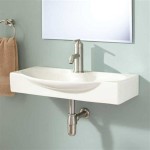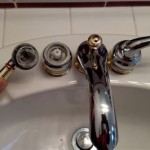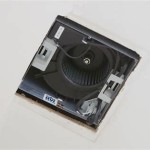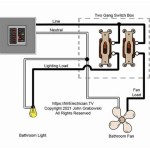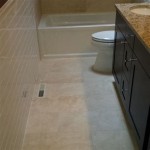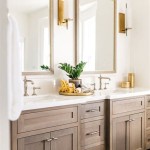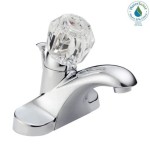Bathroom Ceiling Light Requirements
When designing or renovating a bathroom, lighting is a critical aspect that significantly impacts functionality, aesthetics, and overall atmosphere. Proper bathroom ceiling lighting is essential for tasks like applying makeup, shaving, and showering, while also creating a welcoming and relaxing ambiance. This article explores the key requirements for selecting the right bathroom ceiling light, ensuring it meets safety standards and enhances the functionality of your bathroom space.
Safety Considerations
Bathrooms are inherently susceptible to moisture and humidity, making safety a paramount concern when choosing ceiling lights. The National Electrical Code (NEC) mandates specific safety measures in bathrooms, particularly in areas categorized as "damp" or "wet" locations. The NEC requires the use of "fixture-mounted" or "wet location" fixtures in these areas. These fixtures are designed to withstand moisture and prevent electrical shock. The key safety factors to consider for bathroom ceiling lights include:
1. IP Rating: The Ingress Protection (IP) rating indicates a fixture's resistance to dust and water ingress. For bathrooms, at least an IP44 rating is recommended, signifying protection against splashing water from any direction.
2. Voltage: All electrical wiring and fixtures in bathrooms should be compatible with the local voltage supply. Using fixtures with a voltage rating that exceeds the local supply can lead to malfunctions and electrical hazards.
3. Ground Fault Circuit Interrupter (GFCI): GFCIs are safety devices that detect electrical imbalances and quickly interrupt the circuit to prevent electrical shocks. The NEC mandates the use of GFCIs in bathrooms, typically installed on a separate circuit for the bathroom fixtures.
4. UL Listing: Look for the Underwriters Laboratories (UL) mark on bathroom fixtures. This certification indicates that the fixture has been tested and meets safety standards. UL-listed fixtures ensure they are safe for use in damp and wet environments.
Light Output and Brightness
The brightness of bathroom ceiling lights plays a crucial role in functionality and ambiance. The amount of light required will depend on the size of the bathroom, the types of activities performed there, and the desired ambiance. Key considerations for light output include:
1. Lumens: Lumens measure the total amount of light emitted by a light source. Higher lumen values indicate brighter light. For bathroom ceiling lights, a range between 1,000 and 2,000 lumens is typically sufficient for most tasks.
2. Kelvin Temperature: Kelvin temperature measures the color of light emitted by a bulb. A lower Kelvin temperature (2700K-3000K) produces a warm white light, while a higher Kelvin temperature (4000K-6500K) produces a cool white light. A warm white light is often preferred in bathrooms as it creates a relaxing and inviting atmosphere. However, a slightly cooler white light (around 4000K) can be beneficial for tasks requiring more visibility, such as applying makeup or shaving.
3. Light Distribution: The way light is distributed from a fixture impacts the overall illumination of the bathroom. Consider the amount of light needed for various tasks. A central ceiling fixture might not provide enough light for the vanity area, requiring additional task lighting.
Style and Aesthetics
Bathroom ceiling lights should complement the room's design and style. A wide variety of styles, sizes, and finishes are available, allowing you to create a unique and cohesive look. When selecting a bathroom ceiling light, consider the following factors:
1. Style: Consider the overall design style of your bathroom. A modern bathroom might benefit from sleek, minimalist fixtures, while a traditional bathroom may require a more ornate fixture.
2. Size: The size of the bathroom ceiling light should be proportional to the size of the room. A large, grand fixture might overwhelm a small bathroom, while a small fixture might disappear in a vast space.
3. Finish: Choose a finish that complements the other fixtures and surfaces in your bathroom. Common finishes include chrome, nickel, brass, and oil-rubbed bronze.
4. Dimmability: Dimmable lights provide greater flexibility in controlling the atmosphere. Dimming the lights can create a more relaxing and intimate setting for baths or evenings.
By considering these factors, you can select a bathroom ceiling light that meets your needs for functionality and aesthetics, while also ensuring safety and compliance with electrical codes.

Bathroom Lighting The Definitive Guide Lights Explained

Inlight Cloud Large Plastic Steel Chrome Effect Bathroom Led Ceiling Light Diy At B Q

Bathroom Lighting The Definitive Guide Lights Explained

Led Bathroom Ceiling Light Chrome Finish With Glass Shade 18 Watts 1490 Lumens Natural White 4000k Water Resistant Ip44 Diy At B Q

Modern Chrome Bathroom Light Can Be Mounted To Ceiling Or Wall Ip44

Hib Polar Light Central Bathroom Ceiling In Chrome

Circular Flush Fitting Art Deco Bathroom Ceiling Light Low Ceilings

Aviles Chrome Effect 2 Lamp Bathroom Ceiling Light Tradepoint

Broe Flush Fitting Bathroom Ceiling Light Double Insualted Ip44

Hubble Chrome Effect 5 Lamp Bathroom Ceiling Light Tradepoint
Related Posts
